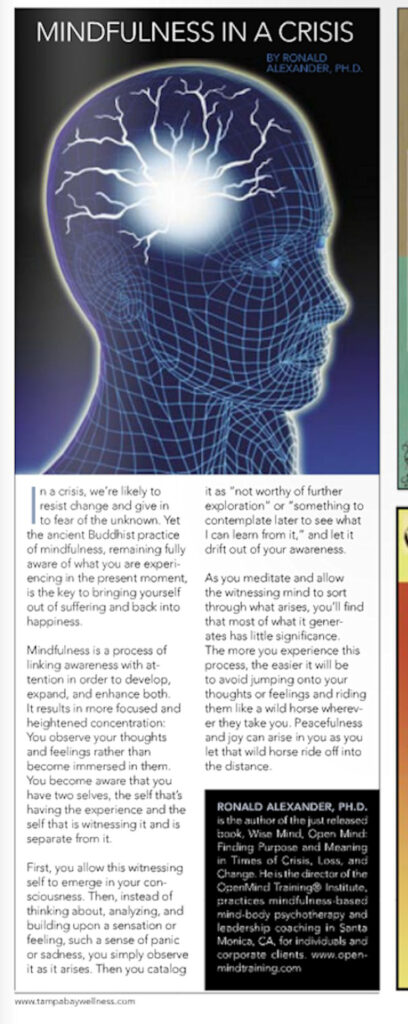
Summary of Article
Mindfulness is a process of linking awareness with attention in order to develop, expand, and enhance both. It results in more focused and heightened concentration: You observe your thoughts and feelings rather than become immersed in them. You become aware that you have two selves, the self that’s having the experience and the self that is witnessing it and is separate from it.
When we’re experiencing a challenging situation the more we engage in the egoic mind or false self, the harder it is to handle it. The ego must move out of the way if we’re to immerse ourselves in the creative transformation necessary to emerge from the crisis. In the state of open mind, the ego’s voice is but a whisper, drowned out by the call of our soul.
To prevent the false self from taking charge, spiritual teacher Ram Dass suggests the dramatic step of an advanced practice he calls “going into nobody training” (Dass 2007). “Becoming nobody” means letting go of your preconceived notions about your roles and practicing open mind, allowing yourself to discover what’s beyond those roles that the false self fiercely clings to, because even the most positive role can limit us and hold us back.
The more you cultivate meditation and enter into the state of open mind, the easier it is to stop running away from difficult feelings; to make the choice to break out of denial, stagnation, and suffering; and to act with mindful intention. For tips on how to mindfully achieve a witnessing state, read my book Wise Mind, Open Mind.
The dual awareness that arises when you allow the witnessing mind to come in fosters the courage to fully experience even the most painful emotions, beliefs, and memories, and tolerate any accompanying physical sensations. The witnessing mind knows that you’re separate from your circumstances, so you feel safer than if your awareness were completely absorbed in those thoughts and feelings. Remain present in your suffering until it passes, and it will.